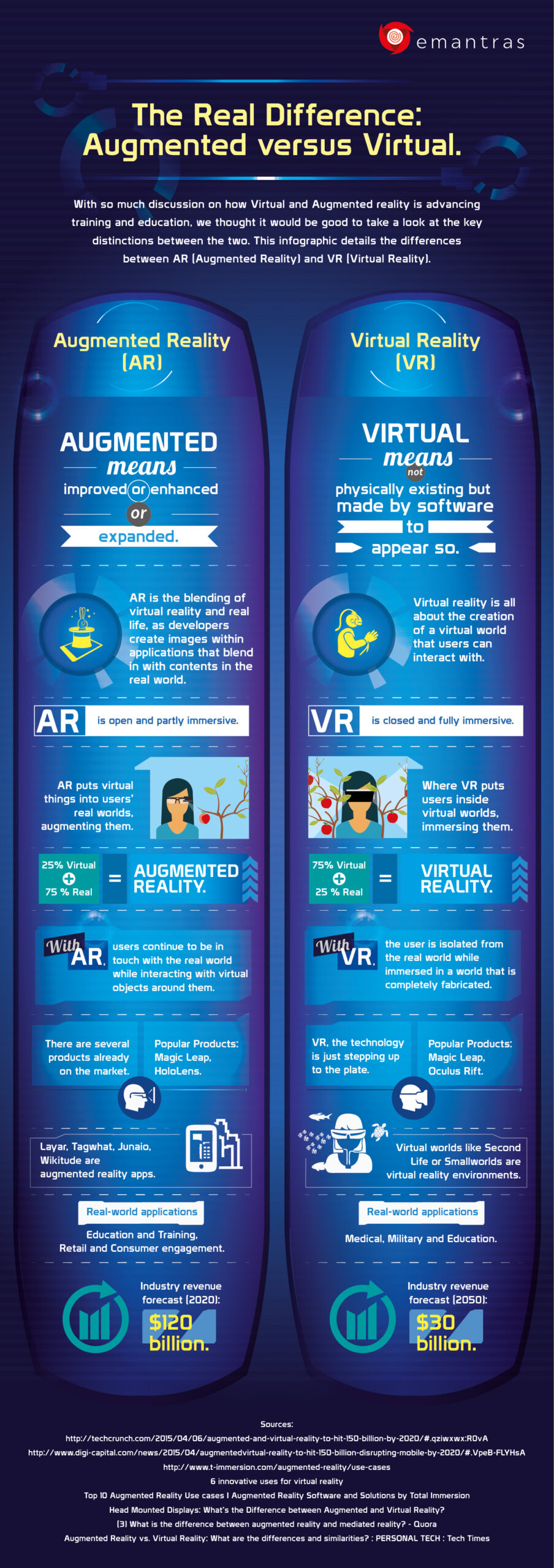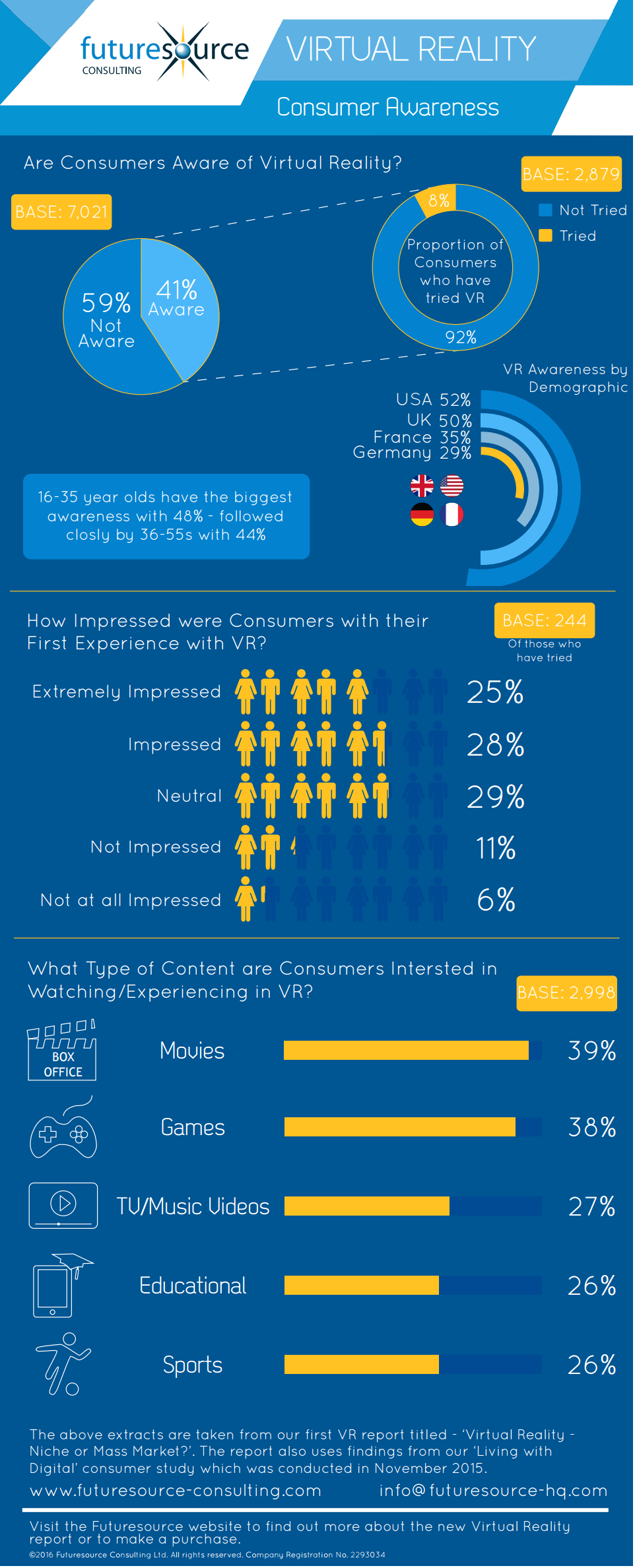Tag: Education
-

Infographic: Augmented Reality vs Virtual Reality
With both Augmented Reality and Virtual Reality growing in popularity, it is important to understand the difference between the two. Augmented Reality blends virtual reality with real life, putting virtual items into real worlds. AR consists of 25% virtual and 75% real environments, making it only partially immersive. Users are able to still be in…
-

Infographic: How We Use AR
Both Virtual Reality and Augmented Reality are growing in popularity across a variety of industries. The reputation of both is that they are primarily used for gaming and entertainment; however AR is actually being used to assist doctors, engineers, teachers, and more in their professions. By introducing AR into the classroom, students will have a new way to learn by…
-

Infographic – The History and Future of Augmented Reality
Unlike Virtual Reality, Augmented Reality does not immerse its user into a new environment; it enhances one’s reality by overlaying digital information onto things being viewed on a digital device. Though AR is rising in popularity in 2016, variations of it have been around since 1957 with Mortin Helig’s Sensorama machine as one such example.…
-

Infographic – The Future of VR
Typically, when we think of Virtual Reality, entertainment is the first thing to come to mind—being able to play games, watch videos, and more on a VR device. However VR expands further than that; there are currently apps on the market that allow users to watch live sporting events or concerts in virtual reality, as if…
-

Infographic – VR and AR in Healthcare
Virtual Reality and Augmented Reality are both being used in a variety of industries, including education, sports, tourism, and even healthcare. The video game industry is projected to earn the highest revenue at $11.6 billion, but the healthcare industry is right behind them with $5.1 billion. VR and AR can be used for a variety…
-

The Top 10 Companies Working on Education in Virtual Reality and Augmented Reality
List updated on 9/16/2016 Virtual Reality and Augmented Reality are new technologies which have been making all kinds of waves recently; but VR and AR are not only going to be used for gaming, several companies are exploring applications for VR and AR to be used in education. Around 90% of what we see and do…
-

Infographic: Consumer Awareness of VR
New VR devices are being released more often now than ever from widely known companies including Google, Samsung, Mattel, and more. Despite the recent surge in VR devices, nearly 60% of people are still not aware of Virtual Reality and only 8% of people have tried Virtual Reality. The majority of those who are aware of…


